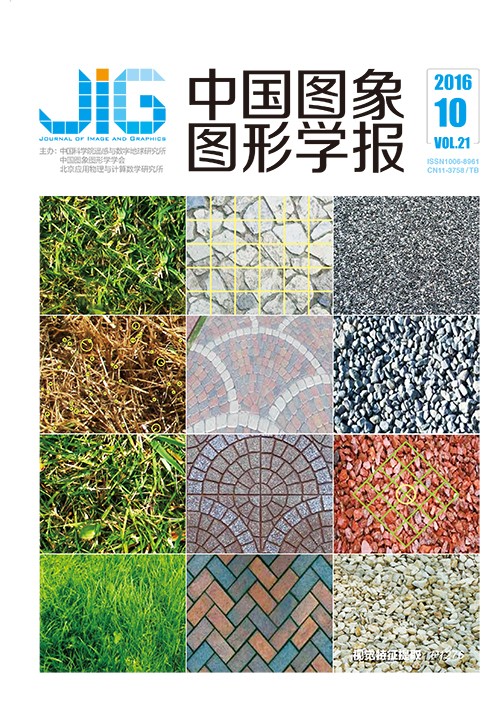
特征融合与S-D概率矫正的RGB-D显著检测
摘 要
目的 许多先前的显著目标检测工作都是集中在2D的图像上,并不能适用于RGB-D图像的显著性检测。本文同时提取颜色特征以及深度特征,提出了一种基于特征融合和S-D概率矫正的RGB-D显著性检测方法,使得颜色特征和深度特征相互补充。方法 首先,以RGB图像的4个边界为背景询问节点,使用特征融合的Manifold Ranking输出RGB图像的显著图;其次,依据RGB图像的显著图和深度特征计算S-D矫正概率;再次,计算深度图的显著图并依据S-D矫正概率对该显著图进行S-D概率矫正;最后,对矫正后的显著图提取前景询问节点再次使用特征融合的Manifold Ranking方法进行显著优化,得到最终的显著图。结果 利用本文RGB-D显著性检测方法对RGBD数据集上的1 000幅图像进行了显著性检测,并与6种不同的方法进行对比,本文方法的显著性检测结果更接近人工标定结果。Precision-Recall曲线(PR曲线)显示在相同召回率下本文方法的准确率较其中5种方法高,且处理单幅图像的时间为2.150 s,与其他算法相比也有一定优势。结论 本文方法能较准确地对RGB-D图像进行显著性检测。
关键词
Feature integration and S-D probability correction based RGB-D saliency detection
Huang Zichao, Liu Zhengyi(College of Computer Science and Technology, Anhui University, Hefei 230601, China) Abstract
Objective Saliency detection is a fundamental part of computer vision applications. Its goal is to obtain a high-quality saliency map that can detect important pixels or regions in an image, which attracts human visual attention the most. Recently, saliency detection approaches in RGB-D images have become increasingly popular, and depth information is proven as a fundamental element of human vision. Most existing saliency detection methods are concentrated on detecting salient objects in 2D images, but they can not be used in detecting salient objects in RGB-D images. In this paper, however, a new RGB-D saliency detection approach based on feature integration and saliency-depth(S-D) probability correction method, is proposed. The proposed method considers image features both at the 2D and RGB-D levels, and extracts color and depth features to complement each other. Method First, the method extracts color and depth features, and sets four boundaries as background seeds to compute the initial saliency map by manifold-ranking algorithm. Second, according to RGB image saliency and depth maps, the method computes S-D correction probability. Third, the method computes another saliency depth map and uses the S-D correction probability to correct the result. After correction, the proposed method finally selects foreground seeds through image threshold processing. Then, a final saliency map is optimized by using the manifold-ranking algorithm again. Result In our experiments, we evaluate the saliency detection ability of our method and six state-of-the-art methods on a large and prevalent RGB-D image dataset, which contains 1,000 images. Experimental results indicate that saliency detection results from our proposed method are much closer to the ground truth than other methods. We also plot a precision-recall curve to show the advantages of the proposed method. From the precision-recall curve, we can conclude that the proposed method has better performance than the other five methods when recall is the same. In addition, we evaluate the time complexity of our algorithm. Our method can process a single image in 2.150 seconds, which is faster than the speed of most of the other methods. Conclusion In this paper, we propose a novel RGB-D saliency detection approach that combines color features from the RGB image and depth features from the depth image. The depth features are extracted to guide RGB image saliency ranking. The RGB saliency detection results are utilized for saliency detection alignment results of depth images. Experiment results demonstrate that the manifold-ranking approach with feature integration can fuse depth and color features effectively, and enable those two components to complement each other. With the help of S-D probability correction, RGB saliency detection results can effectively guide depth saliency detection.
Keywords
saliency detection S-D probability correction feature integration Manifold Ranking RGB-D color feature depth feature
|



 中国图象图形学报 │ 京ICP备05080539号-4 │ 本系统由
中国图象图形学报 │ 京ICP备05080539号-4 │ 本系统由